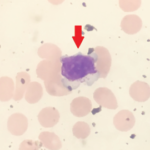One limitation of the study is that it lacked a control group of patients who received non-surgical treatments like painkillers, back braces or bed rest, researchers note in The BMJ.
Another drawback is that all of the patients had recent fractures, making it unclear if results would be similar for people who had chronic pain many months after fractures developed. It’s also possible that some patients in the study experienced chronic back pain unrelated to compression fractures and caused instead by damaged discs or other issues.
Still, the results suggest that patients should not consider vertebroplasty for fractures that happened only a month or two ago, Davies said by email.
“You don’t need a vertebroplasty under nine weeks following onset of pain, because for most people the pain just gets better,” Davies said. “If the pain doesn’t improve and imaging suggests the fracture hasn’t healed then it may be appropriate.”
Reference
- Firanescu CE, de Vries J, Lodder P, et al. Vertebroplasty versus sham procedure for painful acute osteoporotic vertebral compressionfractures (VERTOS IV): randomised sham controlled clinical trial. BMJ. 2018 May 9;361:k1551.

